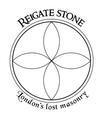Linking decay patterns and decay mechanisms
Past work on Reigate Stone has often mentioned two distinct decay patterns: flaking and powdering. These are common stone decay patterns, which are included in the ICOMOS Illustrated Glossary on Stone Deterioration Patterns, where they are classified as subtypes of scaling and disintegration respectively. In Reigate Stone masonry, they had previously been linked to degrees of shelter. Flaking was said to occur in more exposed areas and powdering in more sheltered areas. However, there are plenty of examples which do not follow this rule. Our initial surveys suggested stone mineralogy could be a further factor. If degrees of shelter are a significant factor, we also wanted to assess the underlying mechanics in more detail.
Past research had also identified salt contamination as a major cause of Reigate Stone decay. The relative influence of stone mineralogy, environmental conditions, and salt contaminate on decay has been a topic of recent research in the wider field of stone conservation science. The role of environmental conditions is of particular interest when considering preventive conservation strategies. Environmental controls could, for example, stabilise fluctuations in temperature and relative humidity (RH). This was the focus of research conducted by C. Price, from the UCL Institute of Archaeology, and HRP at the Wakefield Tower, Tower of London in the 90s and early 00s. They showed that, in theory, it is possible to control salt crystallisation in Reigate Stone masonry by implementing relative humidity regimes. This approach proved impractical, not least because it relied on a precise analysis of the mixture of salts present in the masonry. Slight variations in mixture can result in very different crystallisation scenarios, which might make otherwise safe RH regimes dangerous for the conservation of the masonry.
If specific decay patterns could be linked to underlying environmental conditions, this would be a first step towards designing preventive strategies that could be prescribed on the basis of a visual assessment, rather than a costly laboratory analysis. We conducted research in situ at the Bell Tower, Tower of London and in the laboratories of the Oxford University Centre of the Environment to test this hypothesis.
Areas of flaking and powdering Reigate Stone masonry were identified at the Bell Tower. Flaking dominated the stairwell near the roof of the Bell Tower, whereas powdering dominated the damp, cave-like lower chamber. The micro-climates and ongoing decay of these areas were monitored for 18 months. This helped characterise the decay patterns and linked them to localised environmental conditions. It also provided evidence that both areas were decaying as a result of salt contamination. At this stage, results were compatible with the hypothesis that distinct environmental mechanisms govern the emergence of powdering and flaking decay phenomena. Powdering appeared to be driven by deep wetting of the stone and a steady ambient climate. This means evaporation and salt crystallisation can take place at or near the stone surface (efflorescence). Flaking appeared to be driven by a dynamic moisture profile and ambient temperature cycles. This means salt crystallisation takes place beneath the stone surface (subflorescence).
Samples of detached stone from both areas were analysed for their salt content. Different complex mixtures were found to be present in the two areas. This analysis was used in conjunction with a thermodynamic modelling freeware called ECOS (Environmental Control of Salts), to establish the most likely salt crystallisation scenarios in the two micro-climates. A single, simplified solution was then modelled. This was designed to simulate the different solutions and result in comparable crystallisation scenario. This was done to reduce the impact of differing salt contamination as a variable in the subsequent experiment.
10 samples of fresh Reigate Stone were immersed in the simplified salt solution. The samples were then cut in half, with each half subjected to a different accelerated ageing regime in a climate chamber. The accelerated ageing regimes were based on the micro-climates which had been monitored at the Bell Tower and designed to stimulate the flaking or powdering decay patterns which had been observed there.
The results did provide some indication that the intended decay mechanisms were achieved. The more aggressive regime, with frequent fluctuations in RH intended to mimic the exposed stairwell of the upper Bell Tower, resulted in subflorescence. The more stable regime, with constant moisture intended to mimic the damp lower Bell Tower, resulted in efflorescence. Scaled up to real world scenarios, these crystallisation patterns could be driving the flaking and powdering decay patterns. However, physical variation in the stone was a far greater control on the rate of decay and the emergence of distinctive decay phenomena. Distinct flaking phenomena occured in both simulated environments on stone with pre-existing cracks or when an outer crust had formed (e.g. a salt crust due to efflorescence).
In conclusion, it will not always be possible to confidently link patterns of Reigate Stone decay with specific underlying causes. It is likely that different types of Reigate Stone will respond differently to similar decay mechanisms, or that different mechanisms will result in similar decay patterns. It is also possible that decay patterns are a relic of past phenomena. Unfortunately, it may not be possible to sidestep a more detailed analysis of salt contamination to fully assess certain conditions. Rather than confirming a particular condition, identifying decay patterns should therefore be used to help build evidence. It does seem that softer, more clay bearing Reigate Stone is less likely to produce large, centimetric flakes. The previous links made between degree of shelter and decay pattern should not be discredited, and powdering can be a good indicator of deep wetting. Used together with other pieces of evidence, the identification of decay patterns is therefore an important part of Reigate Stone conservation practice. The Illustrated Reigate Stone Glossary available on this website is intended to help characterise and classify decay patterns, and cross reference them with other variables, with the aim of improving our understanding of the underlying mechanics.
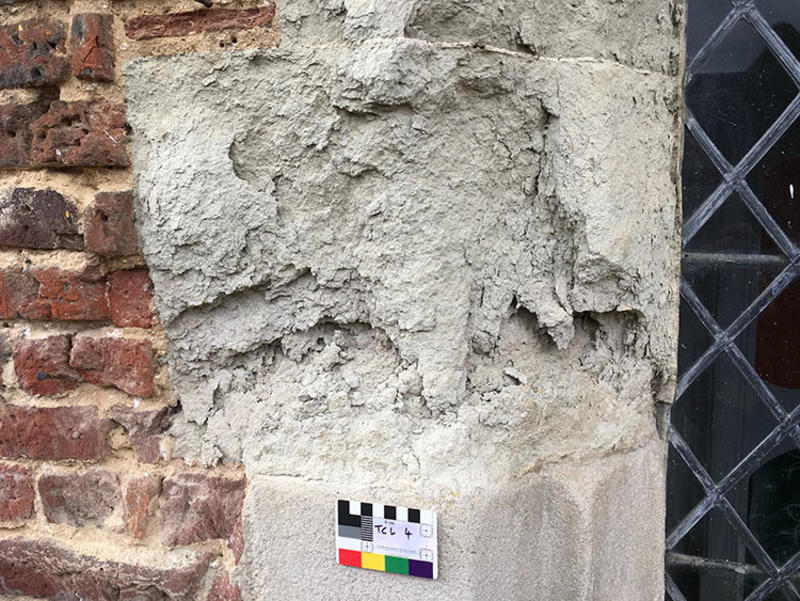
Flaking stone at Hampton Court Palace (severity 4)
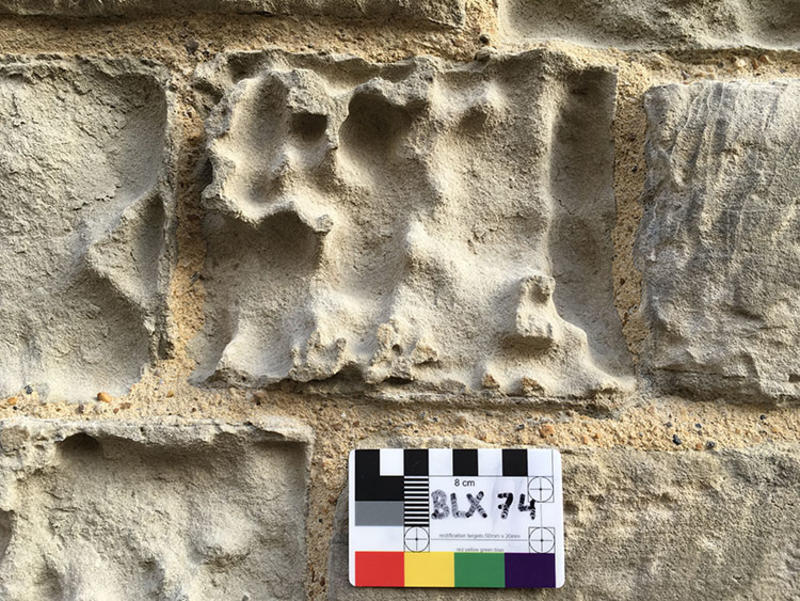
Powdering Reigate Stone at the Bell Tower (severity 4)
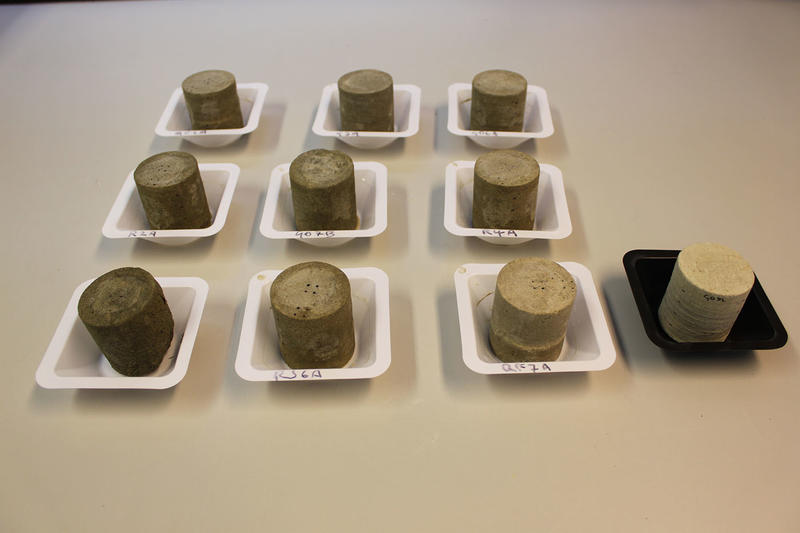
Samples with different baseline mineralogy were subjected to accelerated ageing designed to stimulate flaking and powdering
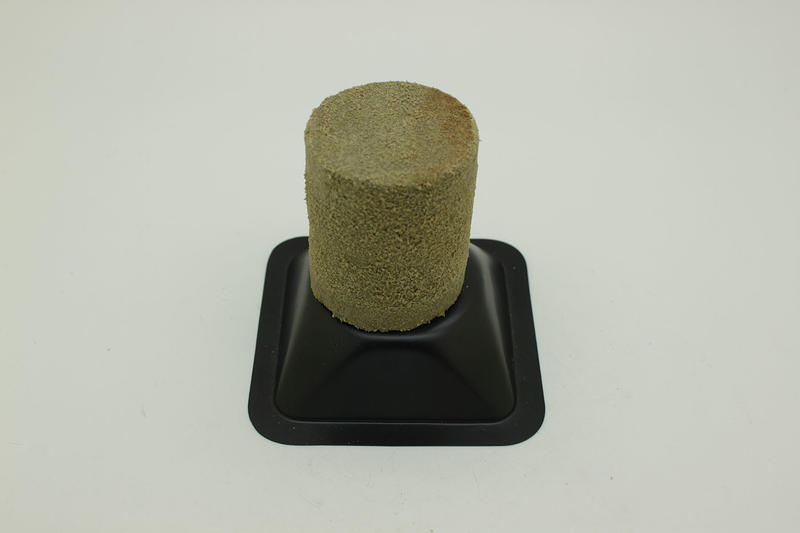
The flaking scenario caused sub-surface salt crystallisation
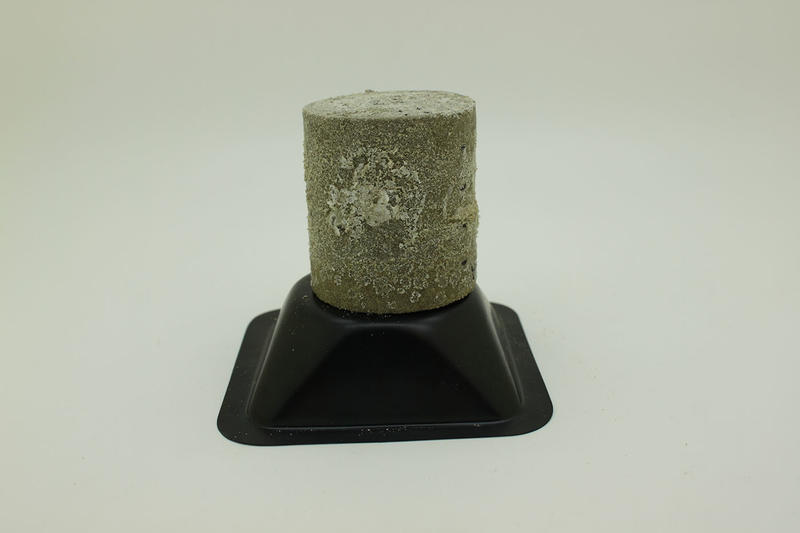
The powdering scenario caused near-surface salt crystallisation
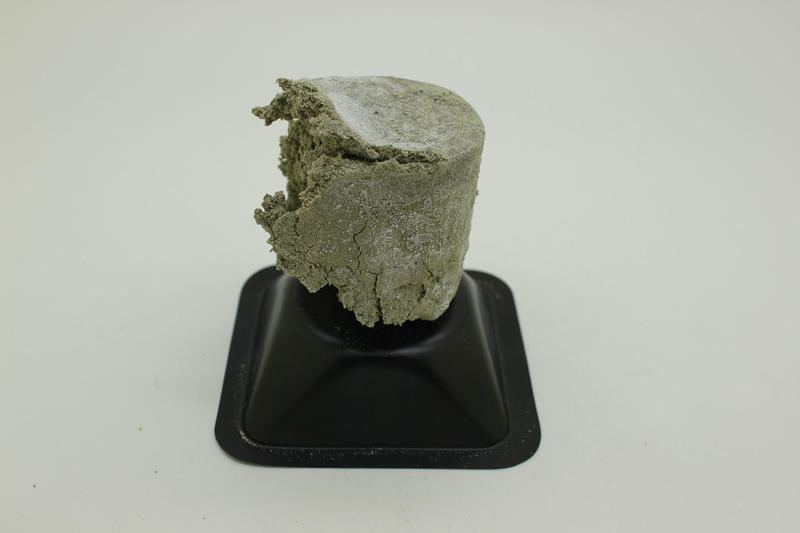
Baseline mineralogy was a greater control on the emergence of specific decay phenomena

